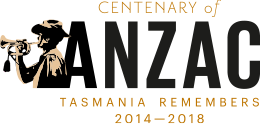Sorell men who served in the Gallipoli campaign
Sorell, like many small rural communities around Australia, saw many local men enlist to serve in World War One.
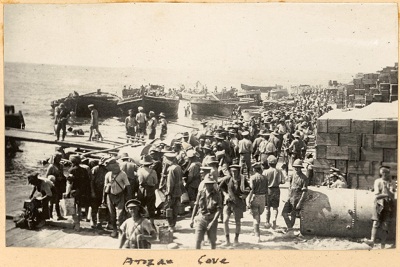
Men recorded on memorials at Sorell who were part of the Gallipoli Campaign were:
- Arthur Victor BARNARD
- Hedley ALLEN
- Robert ALLEN
- Thomas BEDELPH
- Christopher Stanley Gordon BENDER
- Gordon BLACKWOOD
- John Tasman BURKE
- Angus HEAN
- Tennyson Elwin HUNT
- Clyde Frederick KINGSTON
- Howard Inglewood KINGSTON
- Percy Vernon Henry SUTTON
The Allens
Jack, Hedley and Robert Allen were the sons of Solomon Allen, farmer of ‘The Ferns’, at Wattle Hill.
Jack Allen
The eldest of the Allens, Jack, joined up in Western Australia. He was in the first landings at Gallipoli. Three months later, in July, he was wounded and repatriated to Australia. He returned to service on the Western Front as a machine gunner and received the Military Medal for bravery. After five years in the army, he was discharged in England to complete a motor mechanics course, then returned home and lived to age 82. He is buried in St Mary’s Church Cemetery, at Kempton.
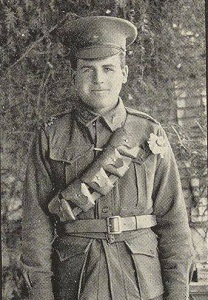 Hedley Allen
Hedley Allen
Hedley Allen (pictured) was 22 years old during his time at Anzac Cove. He served on the Western Front after Gallipoli and received the Croix de Guerre from the Belgian king for gallantry. Hedley returned to Australia, married, had two children, and at Dysart. After moving to Snug, he lost all his personal possessions in the 1967 bush fires.
Robert Allen
A 19-year-old Robert Allen received a gunshot wound to the abdomen on the 15th August 1915. He became dangerously ill and was repatriated to Australia in 1915. He later married, but died in the 1930s; his life was most likely shortened by war service.
Victor Barnard
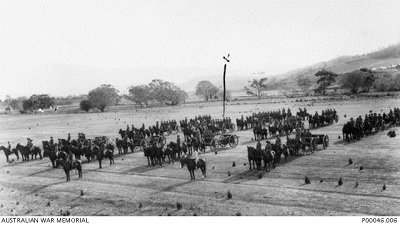
Arthur Victor Barnard was one of the first Tasmanians to join up at the Pontville camp (pictured above) when war was declared in 1914 and was shipped to Alexandria, Egypt for training. He left a fiancée, Ada Powell, behind. His father, Arthur George Barnard of Gordon Street, Sorell, was his next of kin. Victor was a motor mechanic but had previous military experience in the New Zealand Infantry. He served in an artillery division, applying his mechanical skills as an ‘artificer’ or fitter and was promoted to Warrant Officer. He died of wounds in October 1917 and was buried in the Menin Road South Military Cemetery in Flanders, Belgium.
His brother, William Henry Barnard, joined up later in 1915. He was wounded in training in Egypt and repatriated to Australia. He rejoined the AIF and was killed in action in January 1918.
The youngest Barnard brother, Eric Gordon, joined up in 1916 and died from wounds sustained near Villers-Bretonneux, France, around 10 April 1917.
Thomas Bedelph
Thomas Bedelph was a 39 year old horse driver from the Bream Creek area when he joined up in 1914. Four months after landing on the Gallipoli Peninsula, Thomas became severely ill with dysentery. He recovered in a hospital in Birmingham, England, returned to duty, and after being wounded at Bullecourt in 1916, was shipped back to Hobart in October 1917.
Christopher Bender
Christopher Stanley Gordon Bender, a Bream Creek farmer, was passed as medically fit in 1915 despite having part of the second finger missing from his right hand. The 19 year old contracted enteric fever but recovered, fought on the Western Front, was twice wounded and returned home in 1919. He received the King’s Certificate as one of those who served for the entire duration of the Great War.
Gordon Blackwood
Gordon Blackwood, a 19 year old driver from Port Arthur, landed at Gallipoli in August 1915. After evacuation in January 1916, he joined an artillery unit in France. Corporal Blackwood was killed in action in July 1918. In his will, he left everything to his sister, Mrs Tunbridge of Copping.
John Tasman Burke
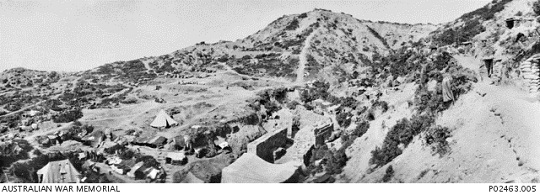
John Tasman Burke was the son of Sorell’s Station Master, Solomon Burke. John was working as a clerk at New Norfolk before he enlisted.
John served in an ambulance unit, the 1st Australian Clearing Station, and rose to the rank of Sergeant during the Gallipoli Campaign. His unit later became the 1st Australian Clearing Hospital Unit. It is estimated that over 700 casualties, including seven doctors, were received by the unit’s 93 men on the first day and night of the landings. They were among the first to land and the last to leave. John Burke then served on the Western Front and returned to Australia in 1918.
Murray Lea Jones
Murray Lea Jones was a Gallipoli veteran who served in the same ambulance unit with John Tasman Burke. Murray Jones was wounded in the first landings.
Murray Jones was Headmaster of the Sorell School in 1936-7.
Angus Hean
Angus Hean was a 23 year old Municipal Inspector when he joined up. His next of kin was his father Thomas, Council Clerk of Sorell. Angus was promoted to Lance-Corporal on the Peninsula and later served on the Western Front. In 1917, he became a 2nd Lieutenant. He was wounded in June 1918, and returned to Australia in November that year.
Tennyson and George Hunt
Tennyson Elwin Hunt and his brother George Albury Hunt, who grew up at Wattle Hill, both joined up in 1914.
George was in the first landing at Gallipoli. He was wounded in fierce fighting in Monash Valley and died at sea on the hospital ship, Gloucester, off Gallipoli.
Tennyson, known as “Tom” by his family, suffered from severe rheumatism after his time on the Gallipoli Peninsula and after a period of recuperation in England, fought on the Somme. He was wounded near Ypres and invalided, returning home to Tasmania in 1917. He then worked for many years as caretaker of the Cornelian Bay Baths and Reserve, passing away in 1954.
Howard and Clyde Kingston
Inglewood, the name of the family farm at Bream Creek, was used as Howard Kingston’s second name. Although the nominal rolls list Clyde Frederick Kingston as his brother, birth registrations show they were cousins. Howard and Clyde were in the 26th Battalion and shipped to Gallipoli towards the end of 1915. Later, members of the 26th Battalion took part in the major battles of the Western Front. Both men returned to Australia at the end of the war.
Percy Sutton
Percy Vernon Henry Sutton from Runnymede contracted pyrexia or ‘trench fever’ six weeks after the landings at Gallipoli. This condition arises from body lice infestation. He spent seven months in field hospitals then was evacuated to Australia for three months recuperation. In March 1916, he re-joined his battalion in France. He was hospitalised in England after breaking his arm in a football match in September 1917. After returning to the front, he was killed in action 23 April 1918.
Acknowledgements
This research was provided by Peta Kelly, of the Sorell History Society, who compiled the research from sources at the AIF Project and National Archives of Australia.
Photo acknowledgements
- Supplies at Anzac Beach 1915 National Library of Australia
- Pontville Tasmania, 19 October 1914
Members of the 9th Battery, 3rd Field Artillery Brigade (3FAB), formed up at the training camp where they had been for six weeks before embarkation for the Middle East the following day. On leaving the camp they marched through Hobart to Ocean Pier. Marked with a cross on the original print in the middle of the group is 2058 Bombardier (later Air Commodore) Raymond James Brownell. (Original housed in AWM Archive Store) (Donor R. Sandover). Australian War Memorial image P00046.006 - Plugge's Plateau, Gallipoli, Turkey. 1915. View of the 1st Australian Casualty Clearing Station to the left. Piles of timber boxes are stored to the right of the Casualty Clearing Station. The path going up the mouth of Shrapnel Valley lies to the right, past the sandbagged dugouts set into the hill. Australian War Memorial image P02463.005
